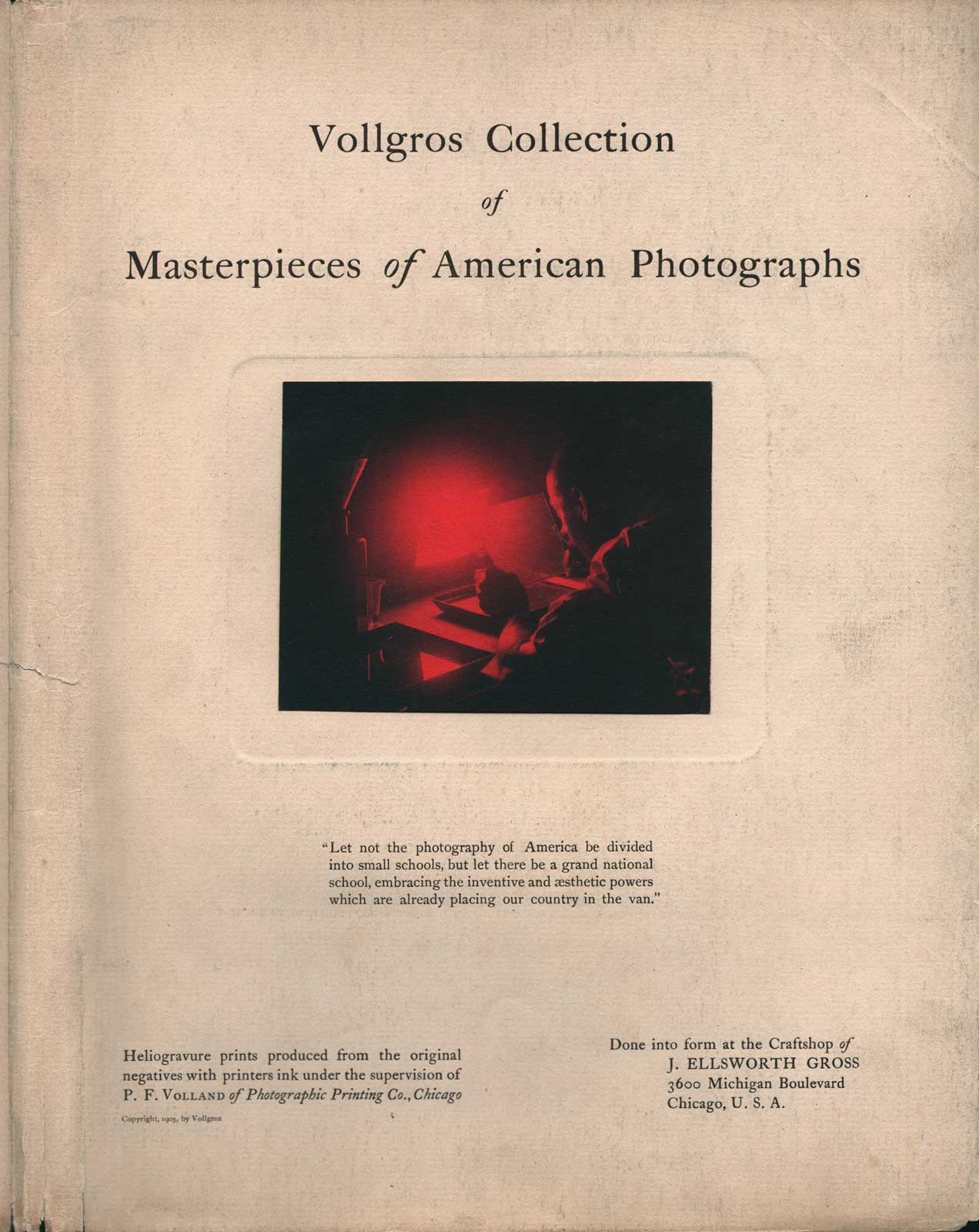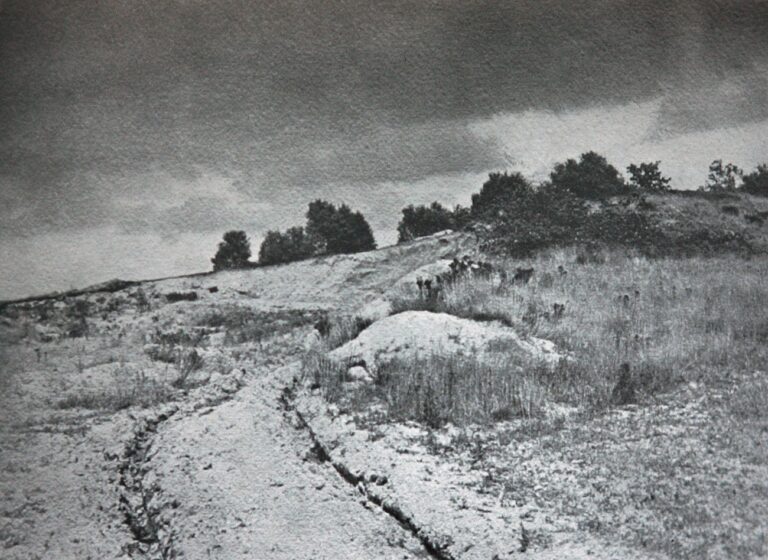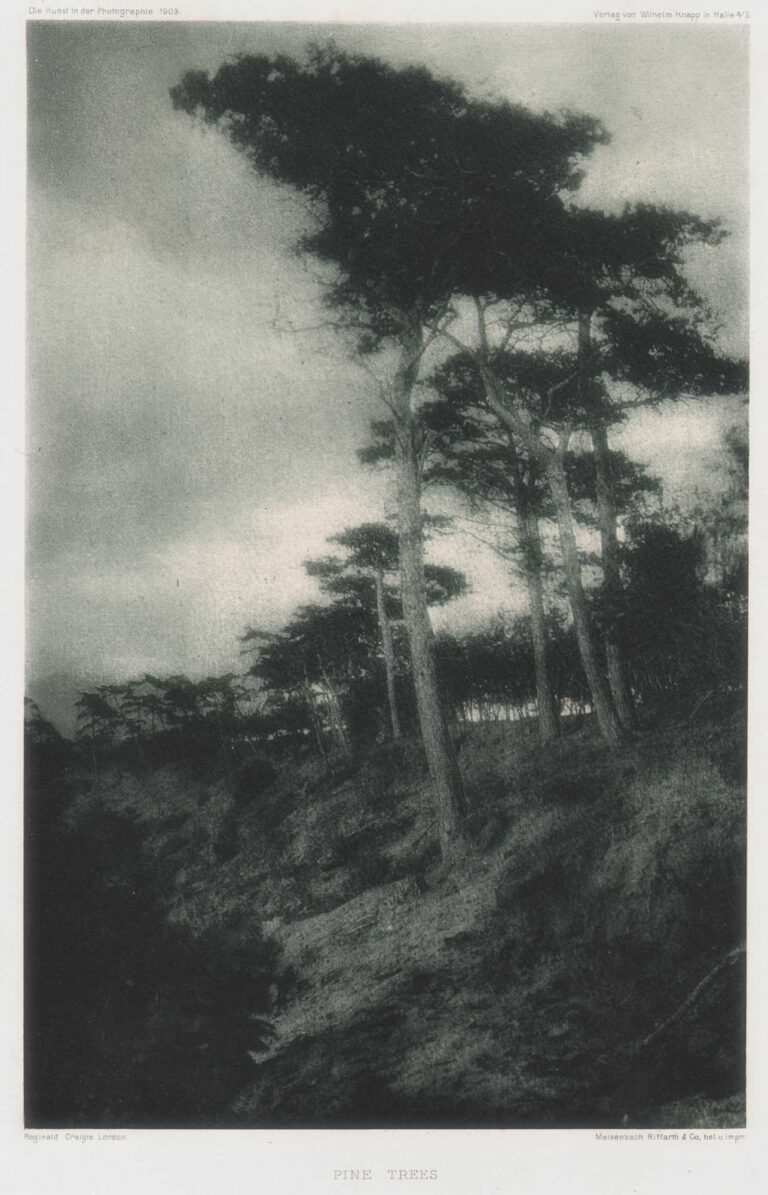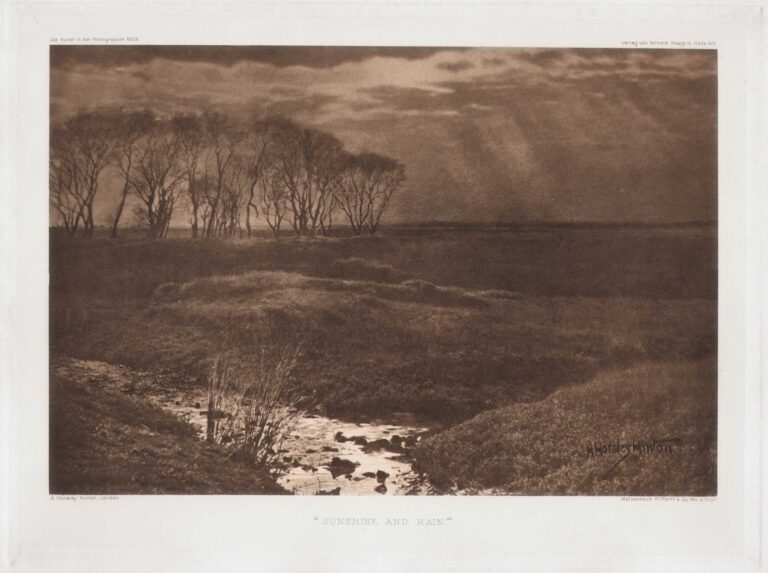
Portfolio Plates Wrapper: The Vollgros Collection
The portfolio’s internal cream-colored laid-paper wrapper designed to enclose the mounted plates features an inset frontis titled Disappointed, a tinted photogravure of a darkroom worker examining a glass plate under a red safe-light. The work, with a rather odd choice to the title considering the promotional intent of the overall portfolio, is credited to the commercial photographer C.F. Poppelbaum. (1.)
The inside back cover contains the following printed letterpress: an excerpt from a much longer “manifesto” article titled “The Aesthetic of Photography“, which originally appeared in the January, 1899 issue of the Photo Era magazine and penned by Darius Cobb, (1834-1919) a well-known American painter and critic:
WE HAVE an incentive for studying earnestly the higher phases of photography in the fact that our country is as old in this art as Europe, which cannot be said of painting; hence we can form here a school in which foreigners may learn of us, as now in painting we learn of them. There is no reason why America cannot lead the world in this art, which demands such a rare knowledge of the elements of science and aesthetics. With his vigorous, aggressive and inventive mind the American will place himself in his art far above the aesthetic pretense that belittles the other fine arts, and he will raise this art above the reach of the dilettanti who parade works in painting which in manner and designs are but imitations of masters’ works. –Darius Cobb
1. Charles F. Poppelbaum: 1864-1945. Poppelbaum was the head photographer for the Packard Motor Car Company of Detroit. A September, 1912 article on the firm in The Printing Art shows the work of the photography department and even includes a photo of Poppelbaum in the darkroom examining a plate: “The versatile Poppelbaum in characteristic pose-developing a plate in the special negative dark room“. It is from this photo that this archive can deduce that the Vollgros plate “Disappointed” features none other than Poppelbaum himself. Later in 1921, the journal The Inland Printer lists him as being associated with Bertsch & Cooper, a Chicago design firm that did advertising campaigns for Packard. It is unknown to this archive if Packard’s design and photography studio was based in Detroit or Chicago, although the Vollgros portfolio plate index lists the photographer as being from Chicago.



